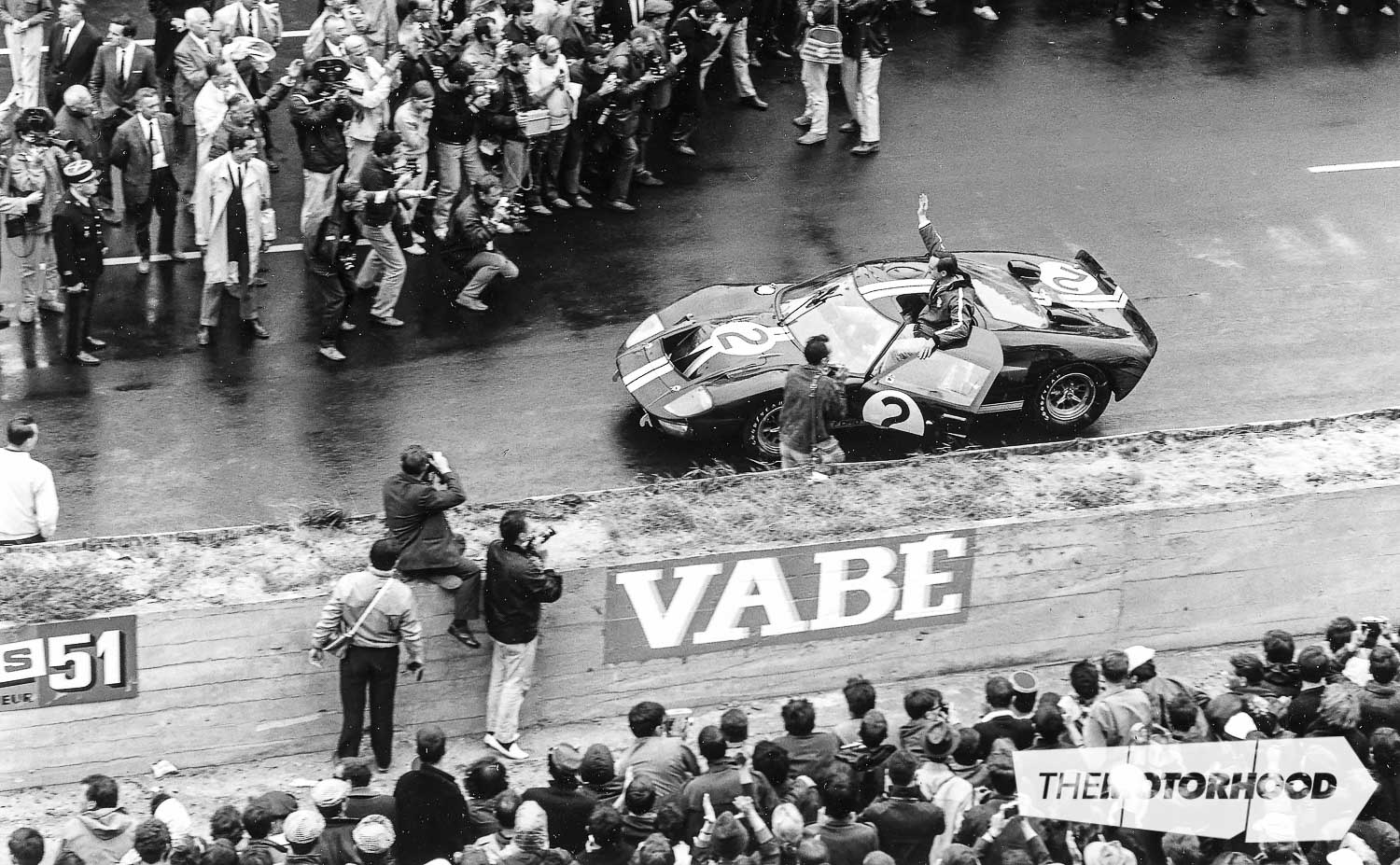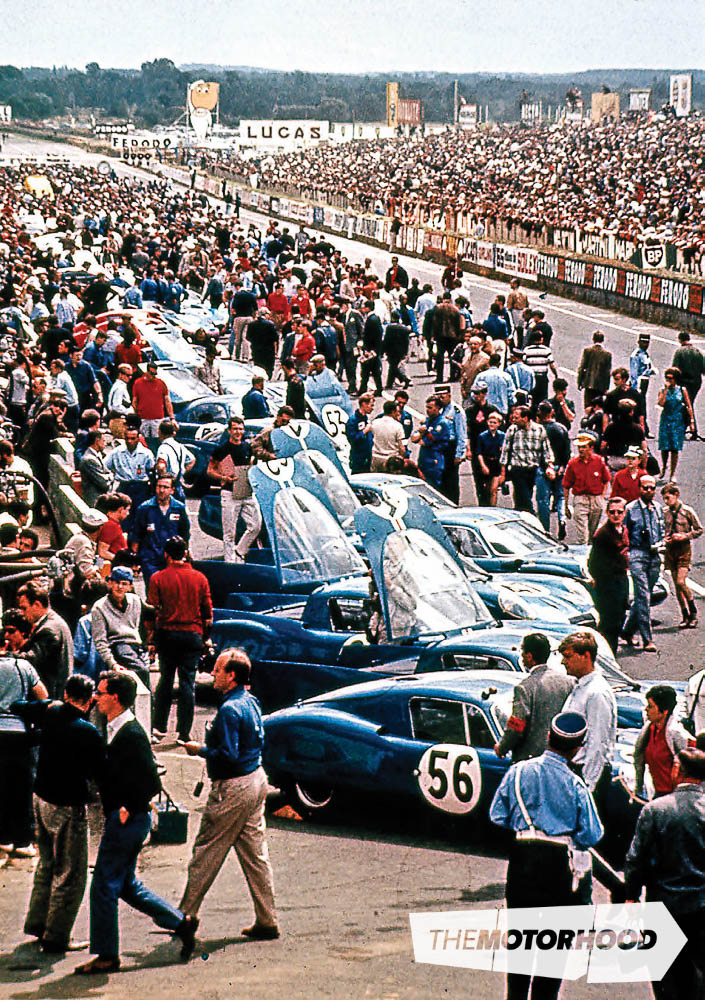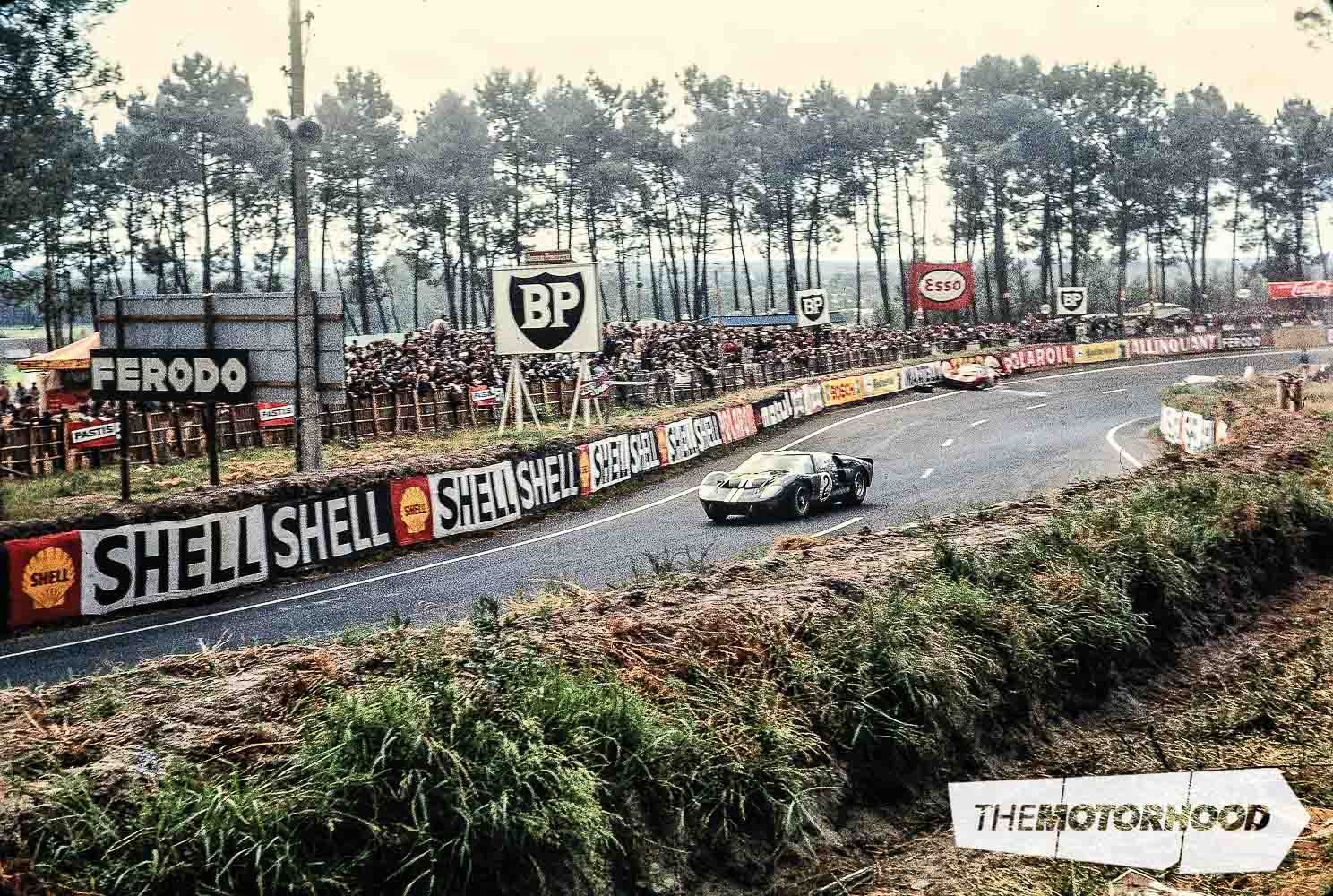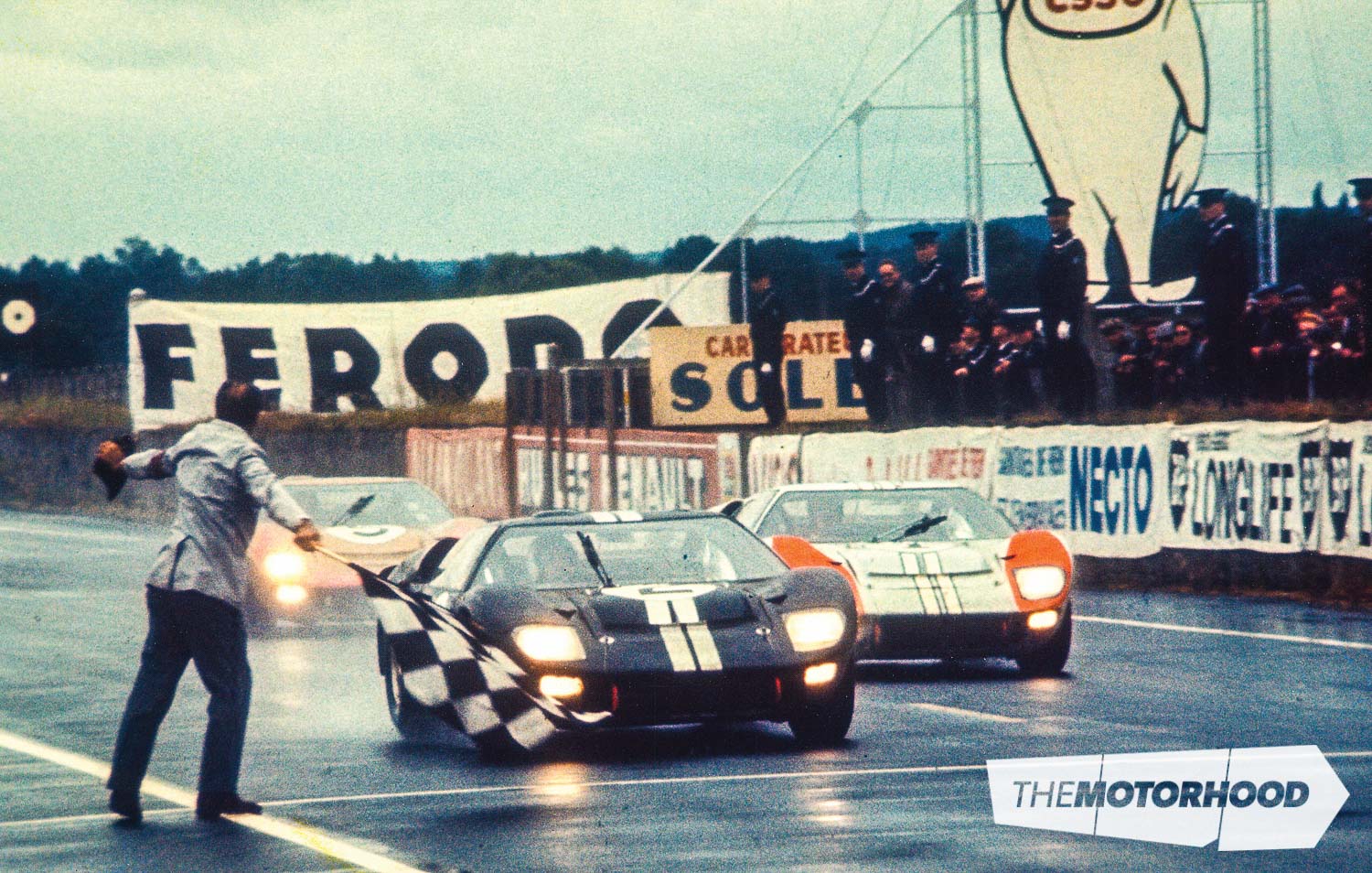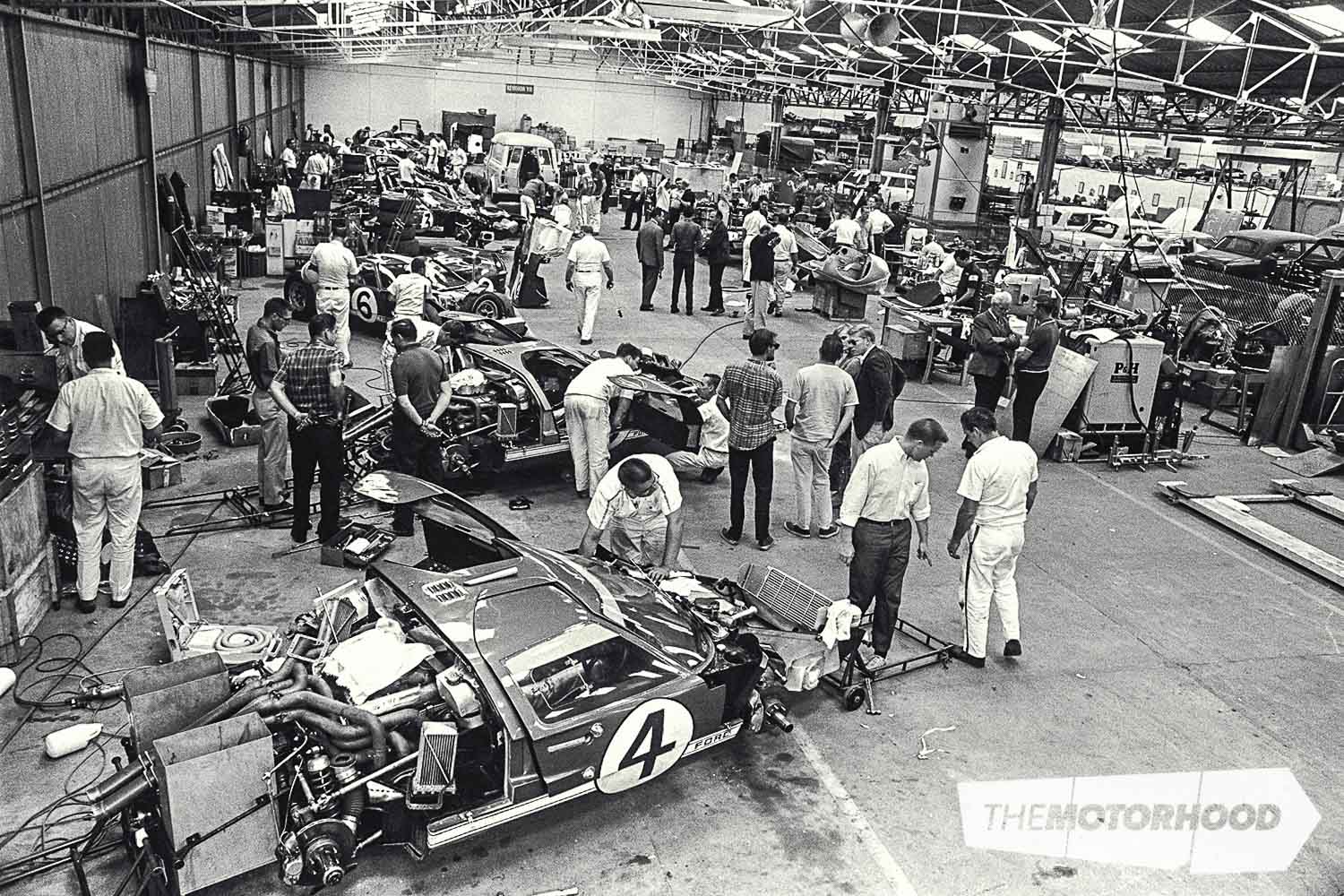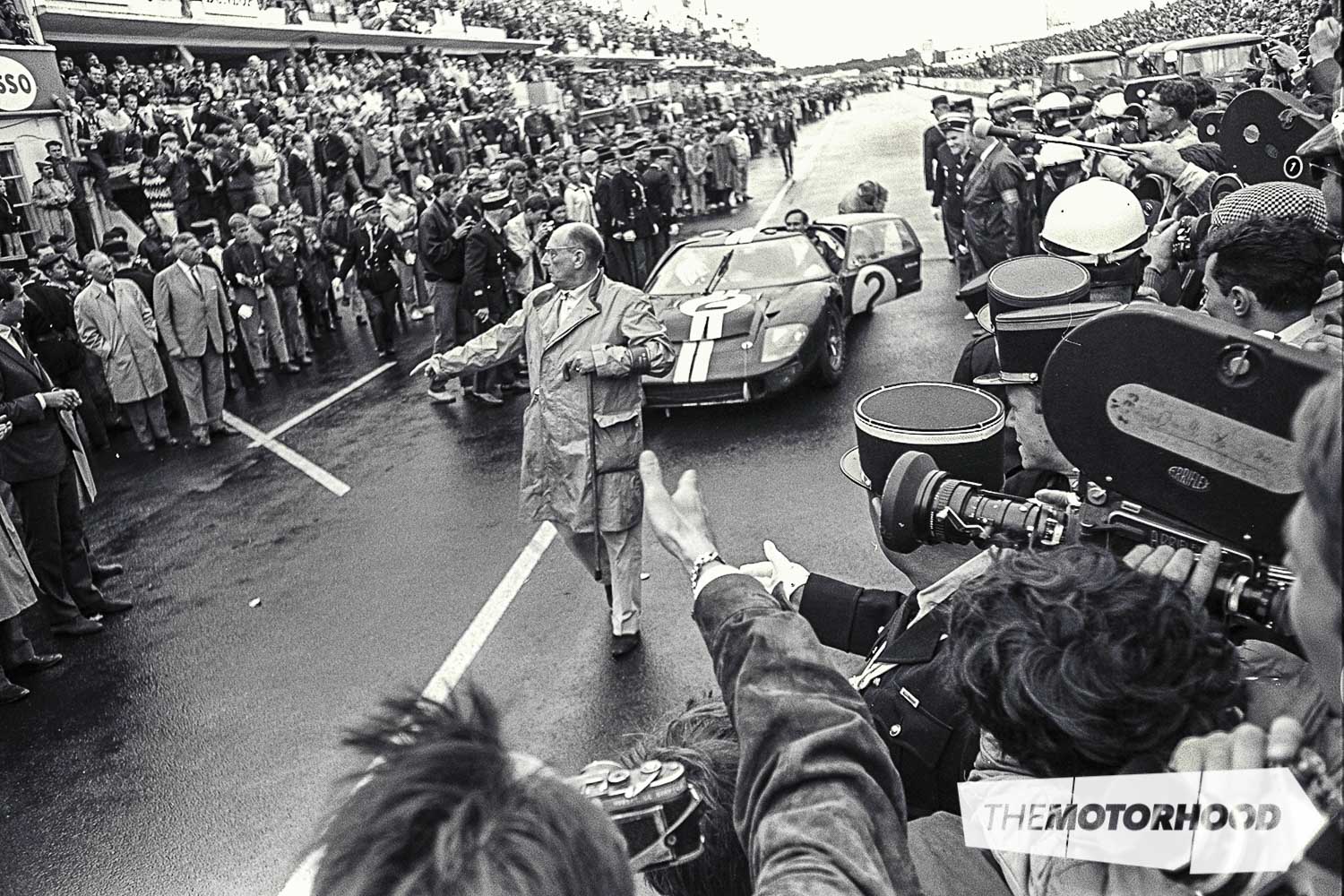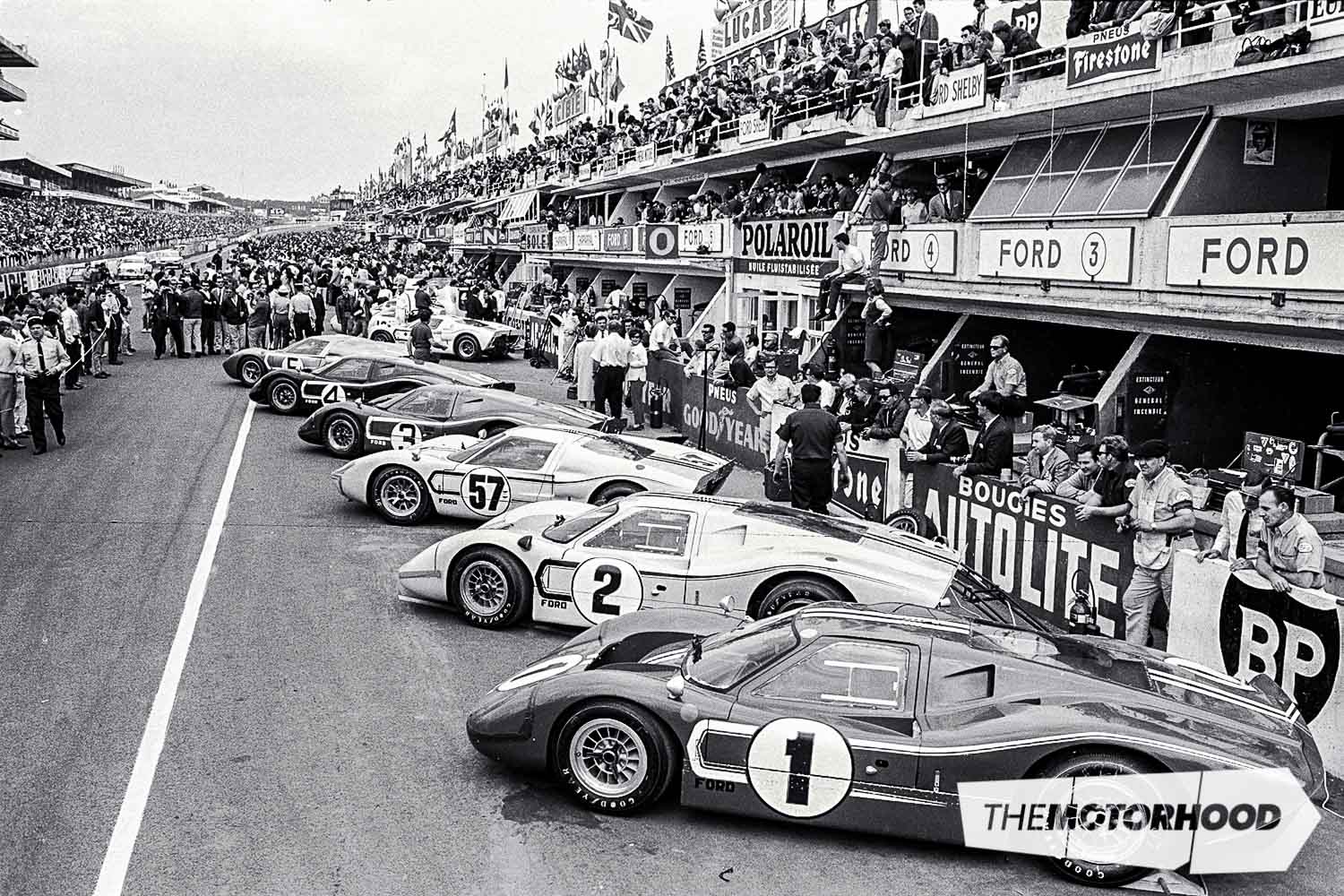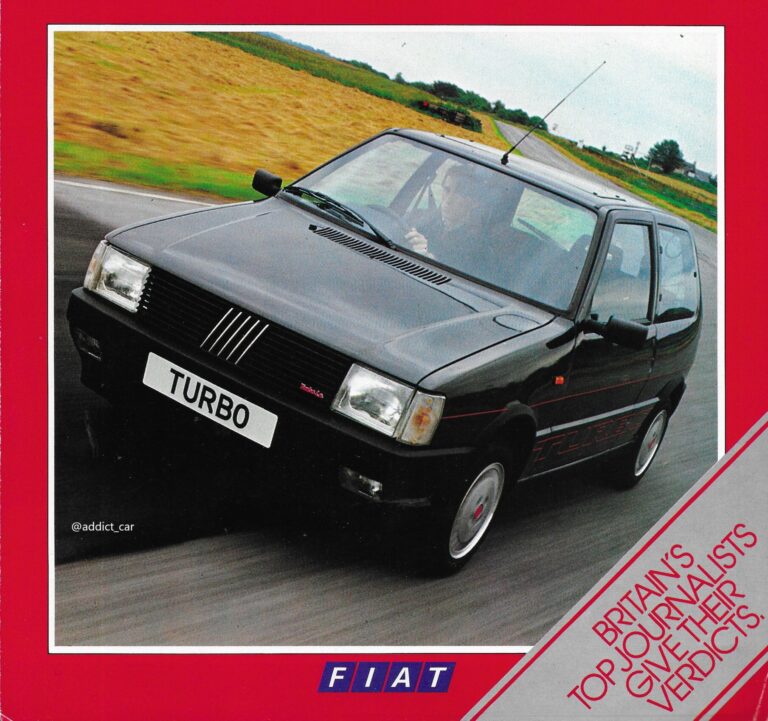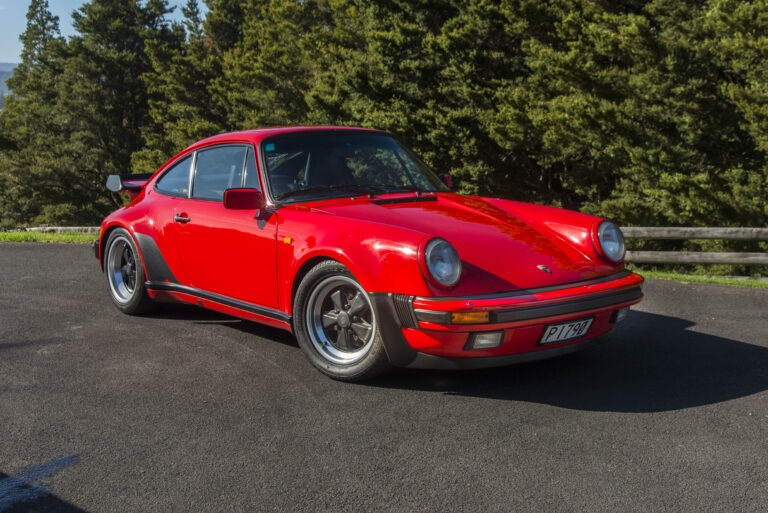data-animation-override>
“50 years on from the greatest Le Mans race in history, it’s clear it was a historic win — not just for Ford, but for New Zealand”
Sunday, June 19, 1966 was perhaps New Zealand’s most successful day in motor racing — apart, perhaps, from Denny Hulme winning the 1967 Formula 1 championship. That was the day on which three of the four drivers from the winning and second-placed cars in the Le Mans race were from this little country.

The day had its roots much earlier on, in 1963, when Henry Ford’s grandson, Henry Ford II, (HF2) and Lee Iacocca had a passion for Ferraris, and the success that marque had in racing and selling high-performance motor cars. The Ford Motor Company did not have a true sports car, and, in fact, in the 1960s, only the Chevrolet Corvette could claim that mantra for US manufacturers. It was deemed near impossible to make a profit in the US off low-volume cars, particularly if the bean counters were involved, arguing that scarce capital could be better employed in mass volume.
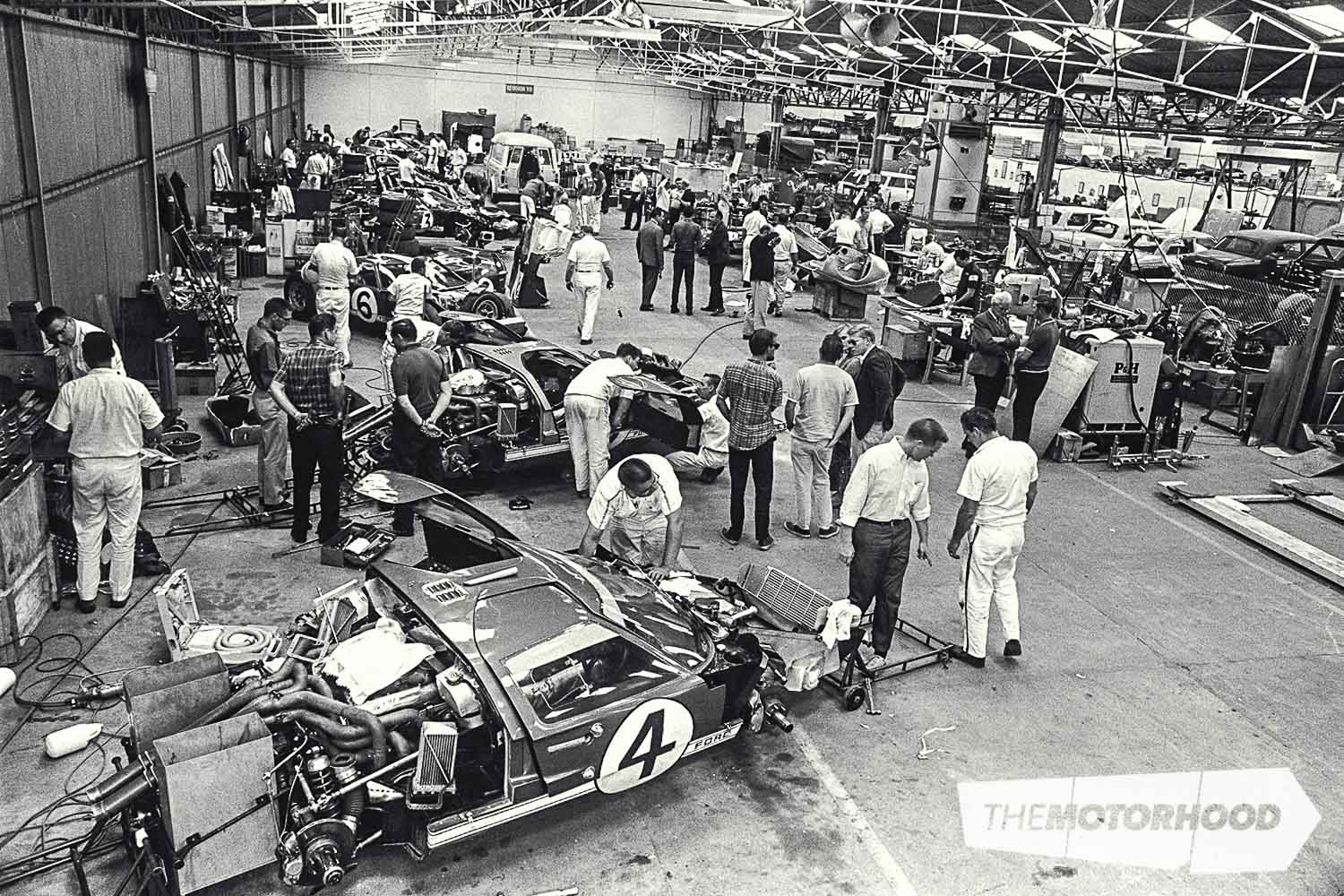
Robert McNamara, Ford’s president, and one of the original whiz kids from post-war Ford, was the driving force behind mass-produced, simple vehicles that made the firm lots of money. When JFK was inaugurated as President of the US in 1961, he lured McNamara away from Ford to be Secretary of Defense — with all the fun that brought with the Vietnam conflict heating up. Departing from McNamara’s strategy, albeit slightly, Iacocca convinced Ford to go with the Mustang concept, and was heralded a hero following its launch in 1964, when it had immediate success.
HF2 sent Don Frey — who ended up as the lead product manager of the Ford Mustang project for Iacocca — to meet with Enzo Ferrari at Modena to negotiate a purchase of the Ferrari company. A price was struck of US$16m, but negotiations broke down when Enzo refused to let the company compete at Indianapolis post sale. It seems Enzo took issue with the large, oval racetracks and stock-car themes of the US race series.
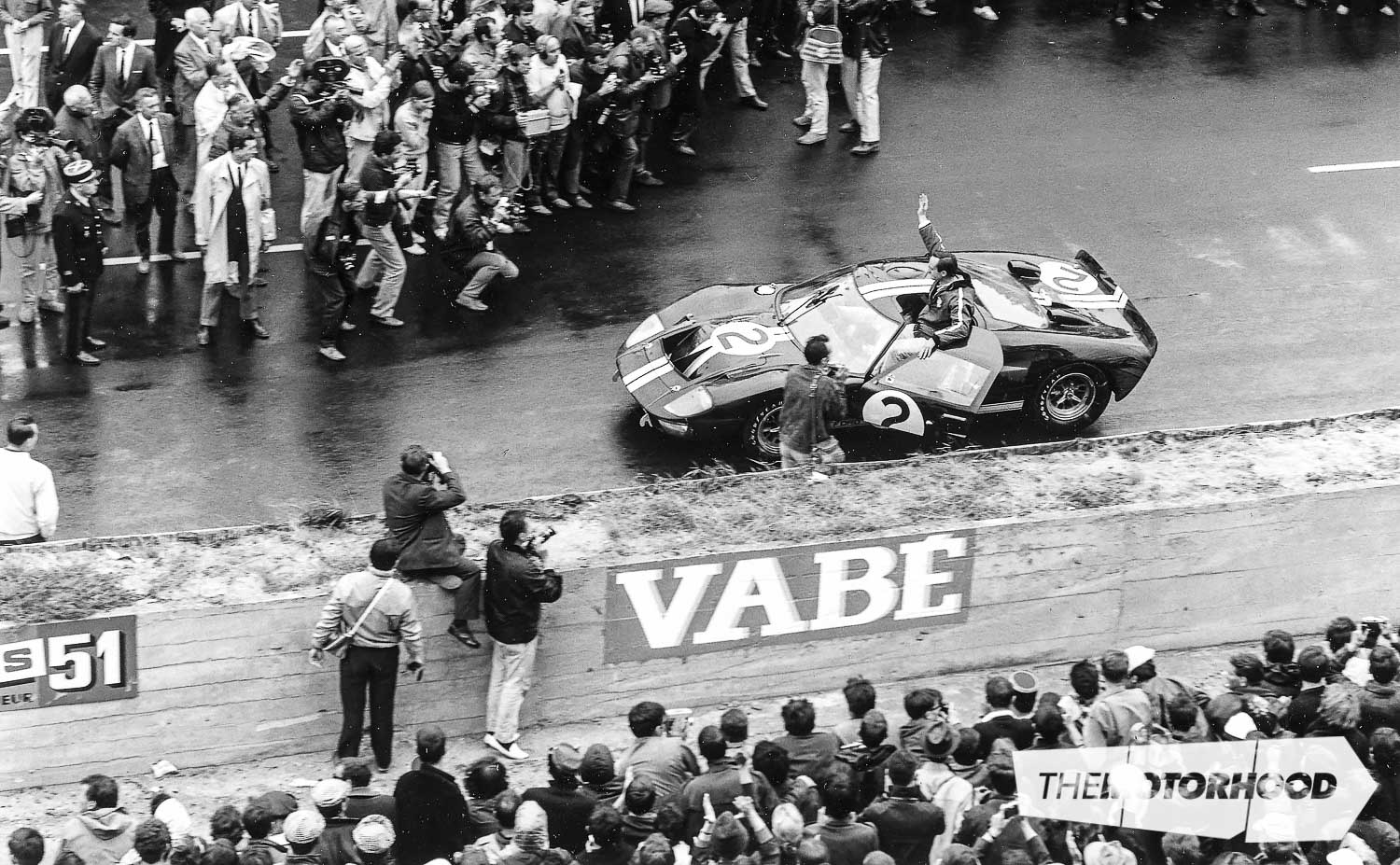
Instead of the Nascar-type stock-car environment, with company backing and the ‘Race on Sunday, sell on Monday’ ethos his grandfather had coined, HF2 wanted a sports car that rivalled what the Europeans had to offer. Much like his father, who had established the original Lincoln brand after lobbying his own father, Henry Ford, HF2 wanted a premium product to embrace.
Henry Ford II admired the European GT (Grand Touring) Racing Series’ sophisticated design, refinement, and performance. Vehicles competing in the 1960s included Ferrari, Aston Martin, Maserati, Porsche, Mercedes, and Jaguar. With the purchase of Ferrari unsuccessful, HF2 opened the cheque book in a military-style project, whereby money was no object and the only objective was a victory at Le Mans.
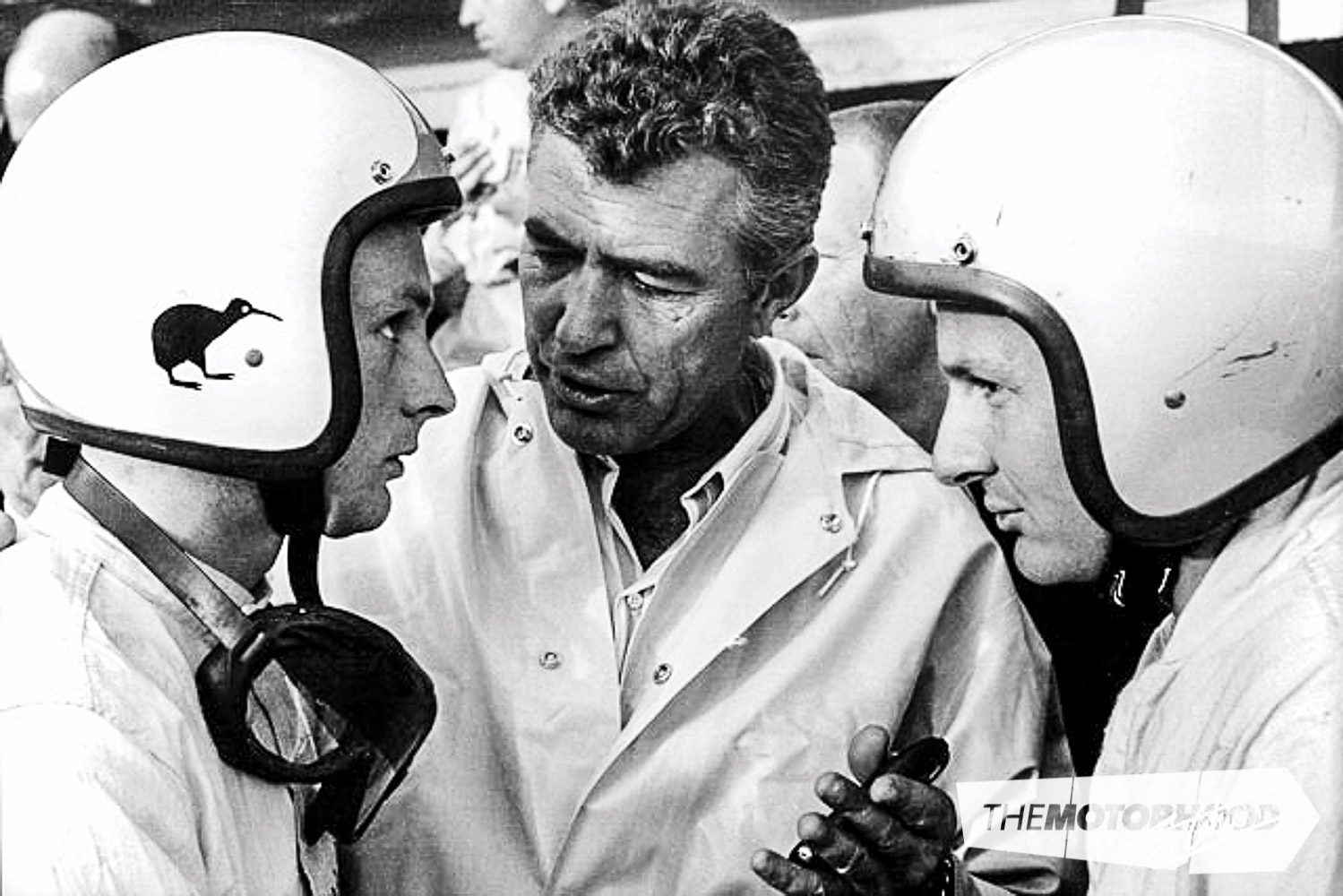
The project was based in the United Kingdom at Ford Advanced Vehicles (FAV), with a largely British team of specialists and engineers. The transmissions, carburettors, and wheels were from Italy, the bodies and chassis were British, and the engines were American. The project was headed by John Wyer, who was lured from Aston Martin to join the team. Wyer was chosen for his significant Le Mans experience. He had managed the team that had won there in an Aston in 1959, with Carroll Shelby as one of the drivers.
The engine of choice was initially a modified 256ci V8, putting out 350hp at 7000rpm and good for an estimated 200mph on the straight. The chassis was a solid beast, to ensure it was capable of handling the stresses put to it by the power and challenging tracks. Some of the steel was ¼-inch thick, and most of the early testing happened at Goodwood. No expense was spared, with Ford even supplying catering to the project team.
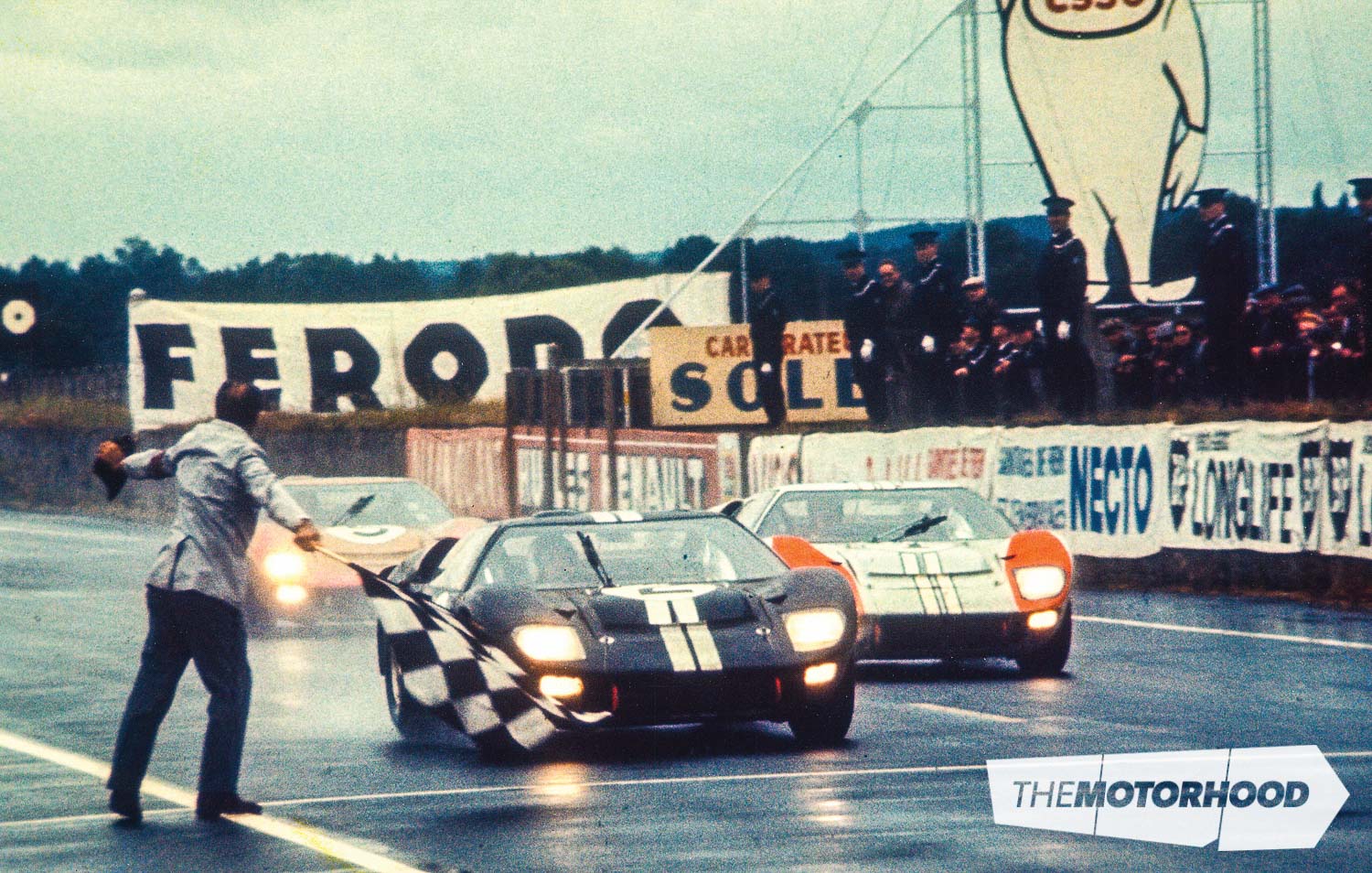
The right-hand drive GT40 had the gear lever on the right on the outer sill because there was no room in the centre tunnel due to the plumbing going through it. The car had some advanced features for the time, including an air-conditioned seat to keep the driver cool, fresh air coming through the dash, ducting feeding air to cool the brakes, and a special adhesive developed in the US to seal the windscreen, making a very exacting fit for aerodynamics.
By April 1964, two months before the race, the team had three prototypes ready for its first public appearance at a two-day practice session at Le Mans. Le Mans is an 8.3-mile track on public roads, much like Bathurst. In the mid 1960s, drivers took around four minutes to go around the course. However, rain forced the Ferraris and the GT40s off the track with technical issues and crashes.
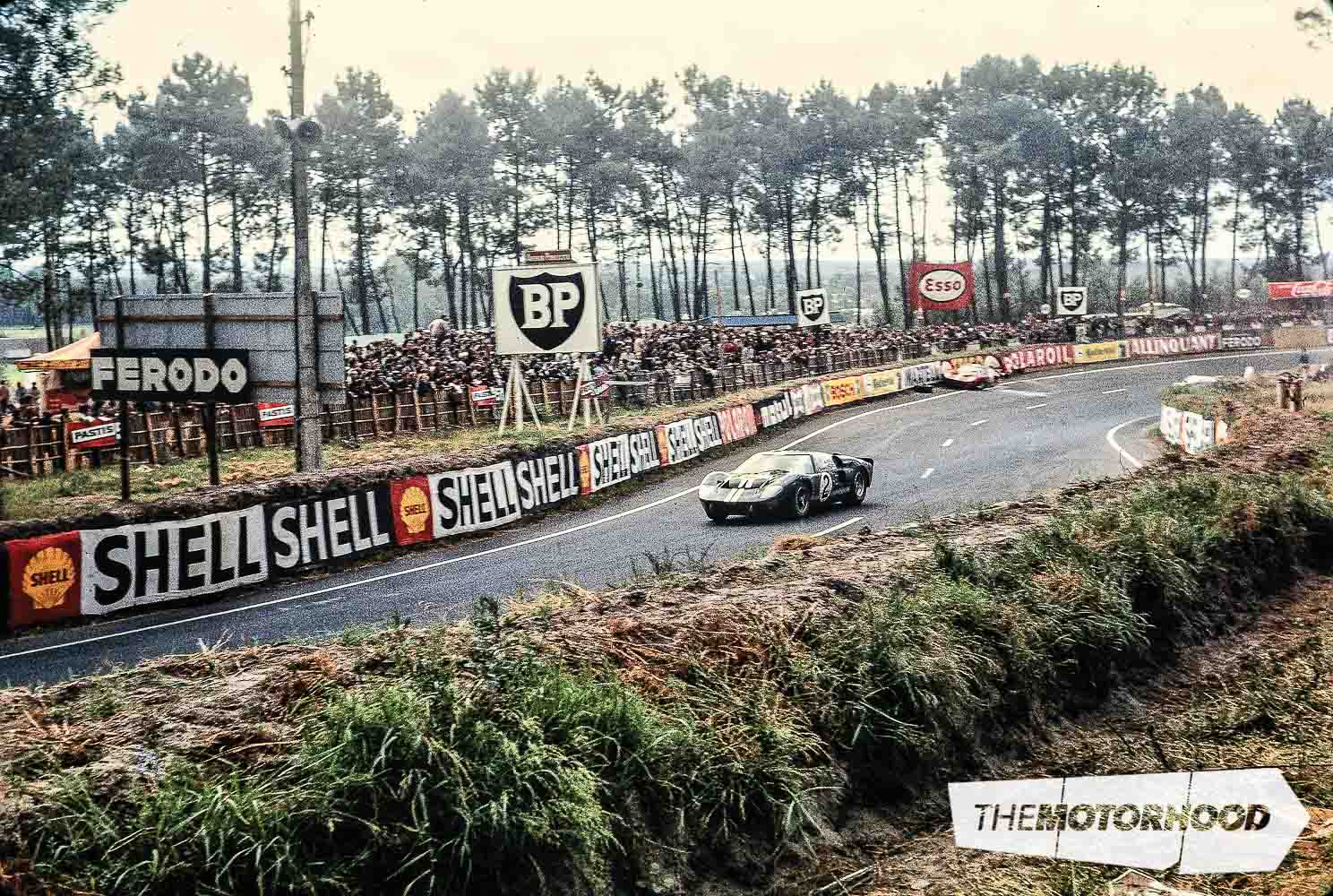
Not long afterwards, the GT40s were racing at Nurburgring, but again were retired with suspension and transmission problems. In the 1964 Le Mans race in June, Ford had three GT40s with six drivers, three being American. The car driven by Phil Hill was leading after two laps, and achieved the fastest lap time at an average of 130mph — but all were retired with mechanical issues before the end of the race.
The GT40s were tested again at 12 Hours of Reims in 1964, but, again, none managed to finished the race. Shortly thereafter, another race in Nassau ended the same way.
For 1965, John Wyer was replaced by Carroll Shelby. Shelby already had a fantastic relationship with Ford with the Cobra and the recent deal for GT350 Mustangs. Wyer continued with GT40s, but not with FAV. With further testing, Shelby found a need to improve handling by adding a front, and then a rear, spoiler, and to improve the cooling with revised ducting. He also replaced the 256 with a 289ci Cobra engine.
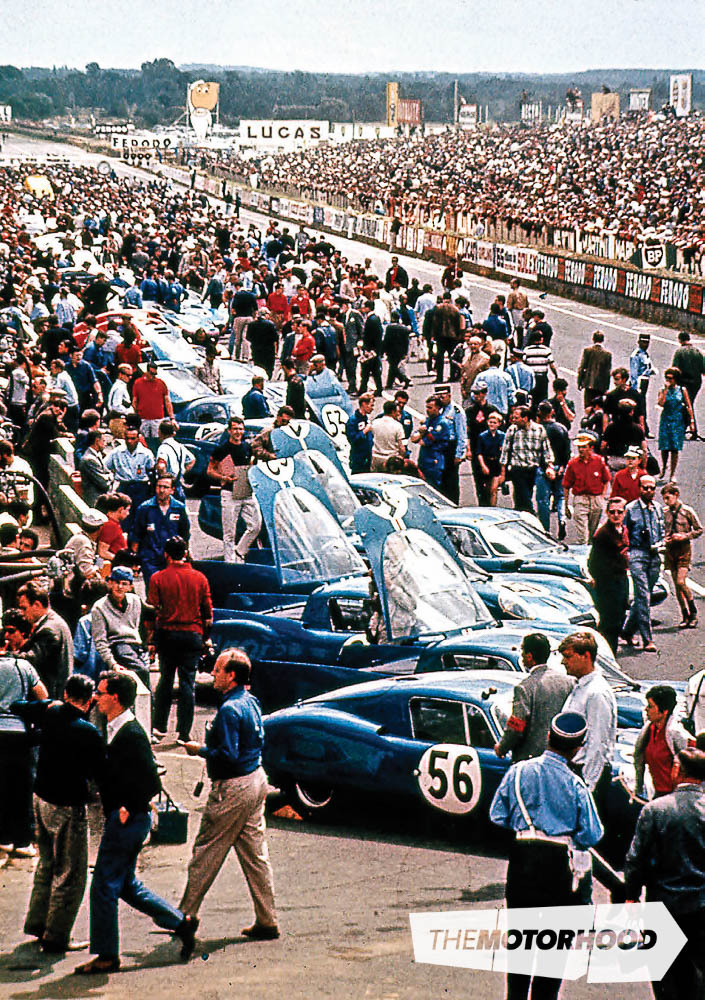
At the 1965 Daytona 2000, the GT40s had their first victory, with a first and a third place, with a Shelby Cobra coming second. Later that year, the Sebring race was full of GT40s, with Bruce McLaren driving to second place. A targa version of the GT40 entered the Targa Florina, a tight road circuit in Sicily. The GT40’s speed advantage counted for nothing when the car ended up finishing in a ditch.
For 1966, Ford upped the ante and revamped the GT40 to the Mk. II, with the 427ci side-oiler racing engine increasing horsepower to 460. The car was largely the same, albeit with part of the rear chassis modified to fit the larger block. The Mk. IIs were instantly successful, coming first, second, and third in the 1966 Daytona — the first year of the 24-hour format — and shortly thereafter repeating that finish at the 12-hour race at Sebring.
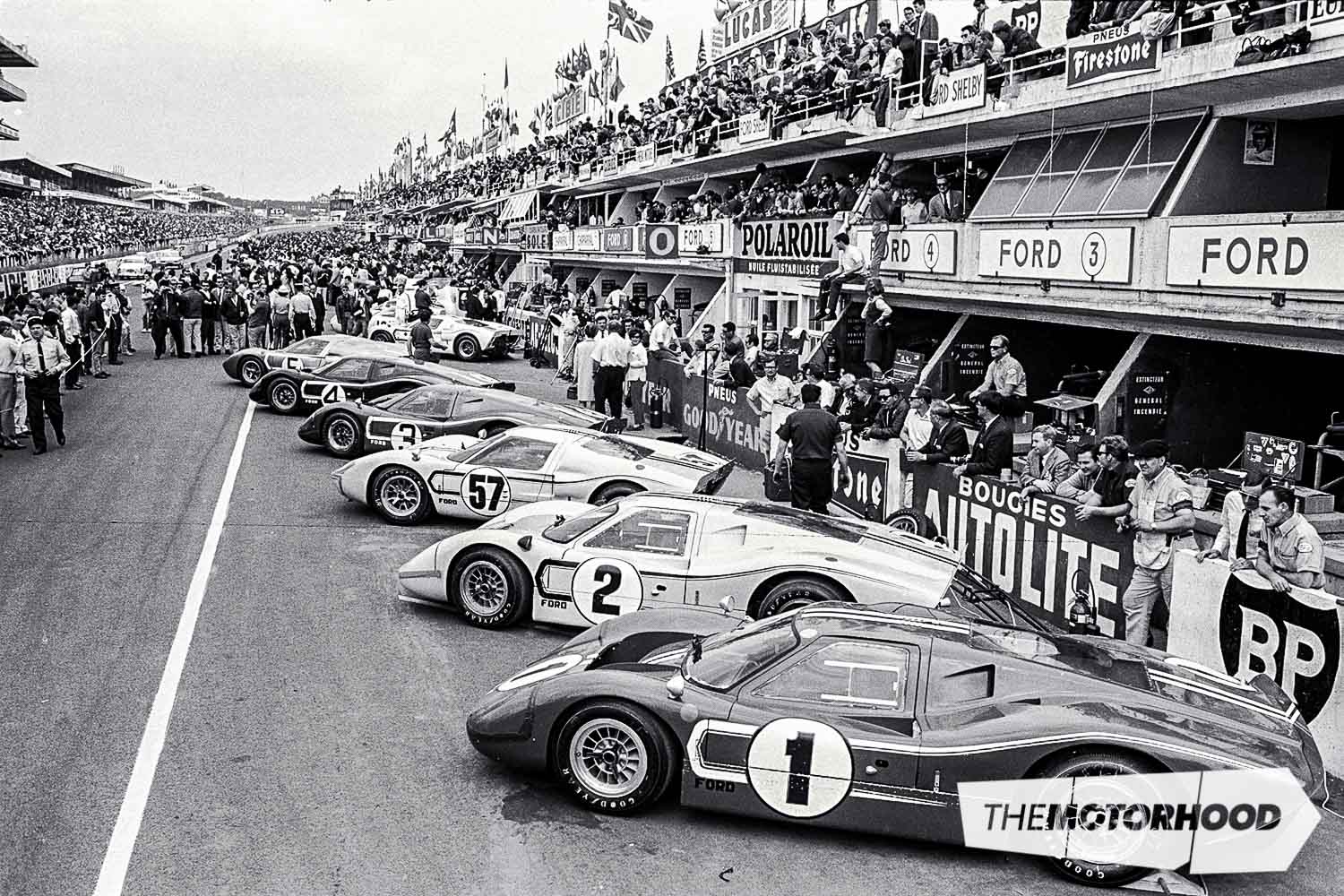
For Le Mans in 1966, Ford had three cars, plus five other Mk. IIs — one team of three and one team of two — and five Mk. Is. Ferrari had seven cars, and Porsche was also very competitive with its new Carrera 6.
The GT40s dominated the race, while Ferrari experienced failures and retirements — a situation that HF2 couldn’t be happier about, especially now that his significant investment was finally paying dividends and he was beating the red Italians.
Late in the race, Ford held the top three positions, and wanted the first-placed and second-placed cars — two Ford Factory race cars — to come in at the same time, creating a dead heat and a marketing opportunity. The plan was for the Dan Gurney / Jerry Grant car to come in first, with the Ken Myers / Denny Hulme car second. At this stage, Bruce McLaren and Chris Amon were running third.

Shortly thereafter, the clever plan was scuttled when the Gurney / Grant car had to retire. While in the pits, McLaren and Myers were instructed to slow down and not take chances, so they could cross the line in a dead heat. The plan was back on, however, during the final throes of the race, when it was discovered that the vagaries of the French racing rules meant that the car that won was the car that had covered the most distance in the race.
When Myers crossed the line, technically McLaren had covered a greater distance, since he had started further down the starting grid the day before. Myers was furious, believing that if he had known he would have made a race of it. However, McLaren had been catching him prior to the strategy of a first-equal finish, so the argument was academic only.
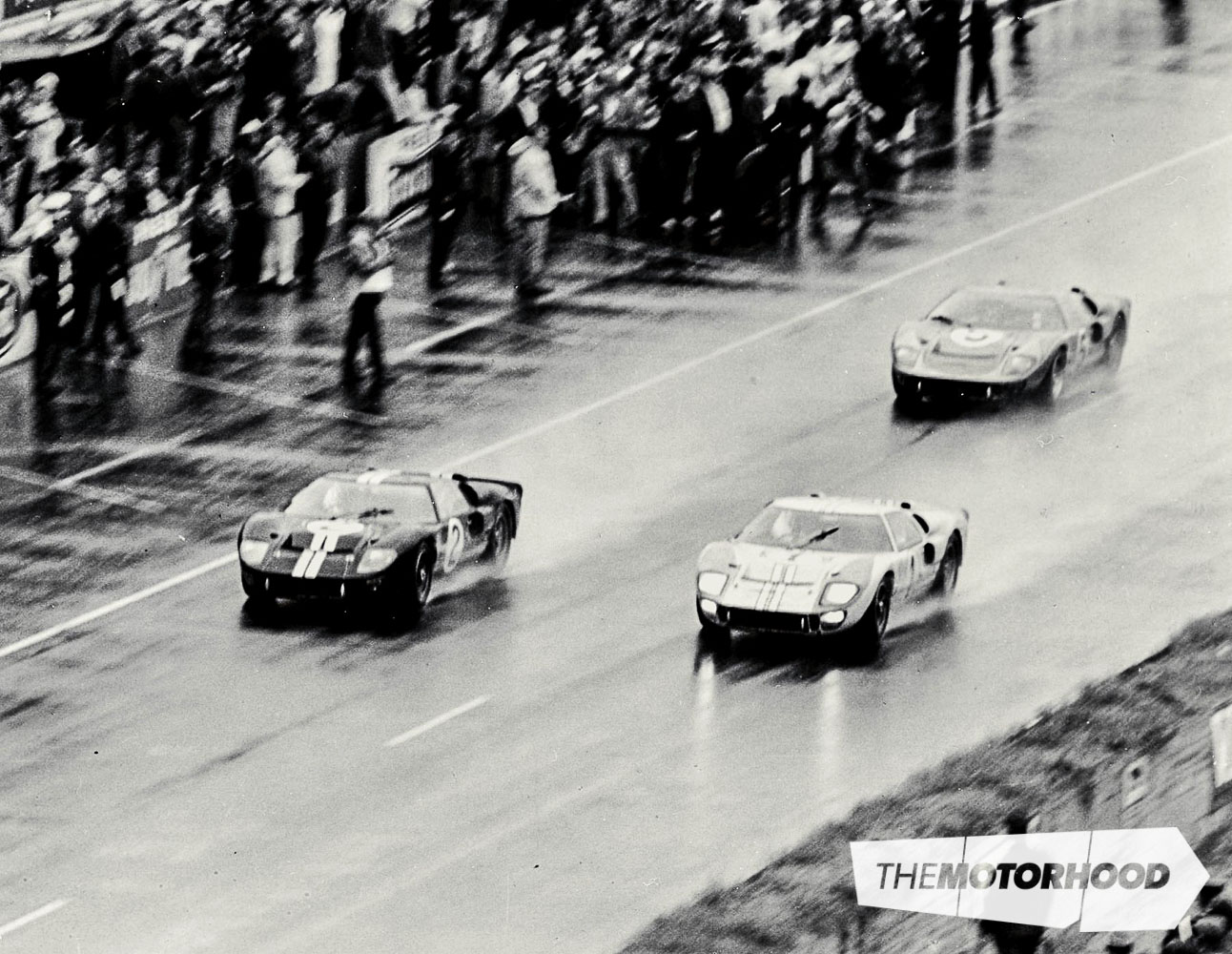
Hence the McLaren/Amon car was declared the winner, Myers/Hulme second, and New Zealand had three of the four drivers in the first two cars. A GT40 was also third, giving a perfect finish.
A final piece of angst was not too far away. It was soon discovered that McLaren and Amon were sponsored by BP and Firestone, whereas the Ford team was sponsored by Shell and Goodyear. Ford had to pay BP out of its $40,000 contract with McLaren/Amon, and Goodyear had to avoid the drivers’ names in the advertising after the race success.
June 13–14 this year marks the 50th anniversary of that successful campaign and invasion of Ferrari territory. To celebrate, Ford is entering Le Mans again, this time with a new GT in the LM GTE Pro class. The new vehicle has similar lines to the 1966 car, but with all-new technology and a 3.5-litre V6 Ecoboost engine rated at 500hp — although some early reports suggest more than 700hp — in the attempt to win the 83rd running of Le Mans. Rules allow for up to three drivers per car for this class, and our very own Scott Dixon will be one of them. Now wouldn’t it be great, and so nostalgic, if Scott were part of the winning team 50 years after his hero.
Footnote regarding the three heroic drivers who held Ford and New Zealand high that day in June 1966: Sadly, Bruce McLaren died in 1970, while test driving, shortly before his 33rd birthday. Denny Hulme died during the Bathurst race in 1992. While 2016 is the 50th anniversary of his success at Le Mans, it also marks 75 years since his father won the Victoria Cross, alongside Charles Upham, for his heroism during the Battle of Crete. Chris Amon, the sole survivor of the three Kiwi drivers, is enjoying retirement. Henry Ford II, Robert McNamara, Don Frey, John Wyer, and Carroll Shelby have all passed away from old age — only Lee Iacocca survives.
This article originally appeared in NZV8 Issue No. 134. You can pick up a print or digital copy of the magazine now:




